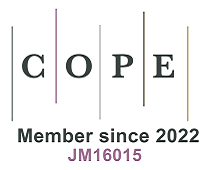Correction: Varied domain structures in 0.7Pb(Mg1/3Nb2/3)O3 -0.3PbTiO3 single crystals
The authors want to make the following corrections to this paper[1].
After carefully rechecking the orientation of the sample, it has been discovered that the sample used in this experiment is (001) oriented rather than the previously stated (100) oriented.
Therefore, the y axis in the coordinate system of Figure 1, Figure 2, and Figure 3 should be [
Figure 1. Type 1 domain structure. (A) Topography of type 1 domain structure. (B) The corresponding OOP phase signal. (C) IP phase signal measured at a tip-sample orientation of 0. The IP polarization variants are denoted on each domain. (D) The binarized version of (C). (E) IP phase signal measured at a tip-sample orientation of 90. (F) The binarized version of (E). (G) The optical image of type 1 domain. (H) The reconstructed three-dimensional polarization vectors for type 1 domain.
Figure 2. Type 2 domain structure. (A) Topography of type 2 domain structure. (B) The corresponding OOP phase signal. (C) IP phase signal measured at a tip-sample orientation of 0. The IP polarization variants are denoted on each domain. (D) The binarized version of (C). (E) IP phase signal measured at a tip-sample orientation of 90. (F) The binarized version of (E). (G) The optical image of type 2 domain. (H) The reconstructed three-dimensional polarization vectors for type 2 domain.
Figure 3. Type 3 domain structure. (A) Topography of type 3 domain structure. (B) The corresponding OOP phase signal. (C) IP phase signal measured at a tip-sample orientation of 0. The IP polarization variants are denoted on each domain. (D) The binarized version of (C). (E) IP phase signal measured at a tip-sample orientation of 90. (F) The binarized version of (E). (G) The optical image of type 3 domain. (H) The reconstructed three-dimensional polarization vectors for type 3 domain.
All the corresponding corrections are summarized below in the main text:
Original text: PMN-30PT single crystals with (100) orientation were obtained from MTI Corporation, China.
Revised text: PMN-30PT single crystals with (001) orientation were obtained from MTI Corporation, China.
Original text: A twofold and a threefold peak splitting were observed around 301 and 311 reflections, respectively, confirming a monoclinic A (MA) structure [Supplementary Figure 1][2,3].
Revised text: A twofold and a threefold peak splitting were observed around 103 and 113 reflections, respectively, confirming a monoclinic A (MA) structure [Supplementary Figure 1].
Original text: By combining the two IP directions as denoted in Figure 1D and F, the polarization vectors for each domain can be established in this (100) oriented MA PMN-PT sample.
Revised text: By combining the two IP directions as denoted in Figure 1D and F, the polarization vectors for each domain can be established in this (001) oriented MA PMN-PT sample.
Original text: The domain structure shows a 4MA domain configuration with non-charged head-to-tail 71° domain walls (m1+ and m2+, m1- and m2-) and 180° domain walls (m2+ and m2-, m1+ and m1-), which can be seen from the reconstructed four polarization vectors shown in Figure 1H.
Revised text: The domain structure shows a 4MA domain configuration with non-charged head-to-tail 71° domain walls (m3+ and m4+, m3- and m4-) and 180° domain walls (m4+ and m4-, m3+ and m3-), which can be seen from the reconstructed four polarization vectors shown in Figure 1H.
Original text: Compared to the type I domain structure, 71° domains are non-existent, but 109° domain walls emerge (m1+ and m3+, m1- and m3-) in addition to the 180° domain walls that are present in both type 1 and type 2 domain structures.
Revised text: Compared to the type I domain structure, 71° domains are non-existent, but 109° domain walls emerge (m2+ and m3-, m3+ and m2-) in addition to the 180° domain walls that are present in both type 1 and type 2 domain structures.
Original text: The reconstructed polarization vectors with only two allowed directions, sharing the same m1+ and m3+ variants as compared to the type 2 domain, are shown in the schematic in Figure 3H.
Revised text: The reconstructed polarization vectors with only two allowed directions, sharing the same m2+ and m3- variants as compared to the type 2 domain, are shown in the schematic in Figure 3H.
Original text: The divergence is likely due to the different polarization variants in type 1, m1 and m2, in contrast to m1 and m3 in type 2 and 3 domain structures. The resultant vectors m1+ and m2+ or m1- and m2- are closer to the OOP direction of the electric field along the [100] directions than m1 and m3 pairs, which allows the electrical switching at a lower voltage.
Revised text: The divergence is likely due to the different polarization variants in type 1, m3 and m4, in contrast to m2 and m3 in type 2 and 3 domain structures. The resultant vectors m3+ and m4+ or m3- and m4- are closer to the OOP direction of the electric field along the [001] directions than m2 and m3 pairs, which allows the electrical switching at a lower voltage.
Supplementary Figures 3 and 5-7 are also corrected for the sample orientations.
The authors confirm that the scientific conclusions are unaffected. The original publication has also been updated.
Supplementary Materials
REFERENCES
1. Zhang D, Wang L, Li L, Sharma P, Seidel J. Varied domain structures in 0.7Pb(Mg1/3Nb2/3)O3-0.3PbTiO3 single crystals. Microstructures 2023;3:2023046.
2. Liu HJ, Chen HJ, Liang WI, et al. Structural study in highly compressed BiFeO3 epitaxial thin films on YAlO3. J Appl Phys 2012;112:052002.
Cite This Article
How to Cite
Download Citation
Export Citation File:
Type of Import
Tips on Downloading Citation
Citation Manager File Format
Type of Import
Direct Import: When the Direct Import option is selected (the default state), a dialogue box will give you the option to Save or Open the downloaded citation data. Choosing Open will either launch your citation manager or give you a choice of applications with which to use the metadata. The Save option saves the file locally for later use.
Indirect Import: When the Indirect Import option is selected, the metadata is displayed and may be copied and pasted as needed.
About This Article
Special Topic
Copyright
Data & Comments
Data























Comments
Comments must be written in English. Spam, offensive content, impersonation, and private information will not be permitted. If any comment is reported and identified as inappropriate content by OAE staff, the comment will be removed without notice. If you have any queries or need any help, please contact us at [email protected].